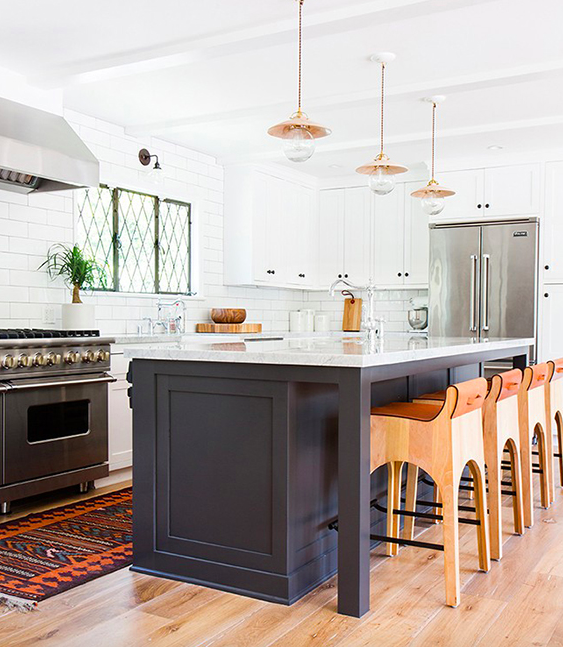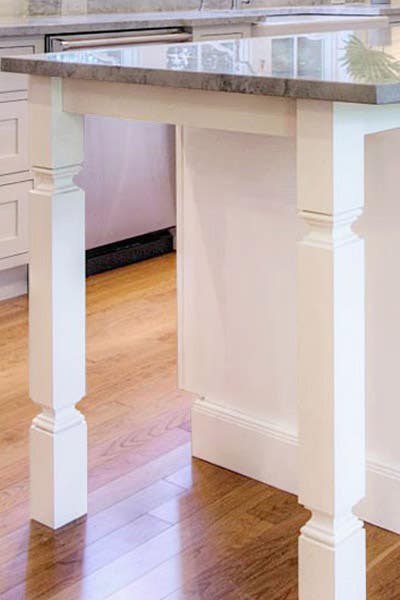Important Aspects to Consider When Selecting Legs For Kitchen Island
Choosing the suitable legs for a kitchen area island involves a cautious assessment of numerous elements that can substantially influence both capability and aesthetic allure. Amongst these, the selection of material plays a crucial role in making sure longevity, while the style should enhance the existing decoration. Factors to consider such as height and weight assistance are necessary for stability and convenience. As we explore these components, it ends up being clear that each choice can have significant implications for the general kitchen experience. What subtleties should be taken into consideration in each of these categories to achieve the ideal balance?
Product Options
When selecting legs for a kitchen area island, recognizing the numerous material choices is crucial for achieving both aesthetic allure and architectural integrity (Legs For Kitchen Island). The option of product significantly influences not just the durability of the island but likewise its general layout and functionality
Wood is a prominent option, supplying heat and versatility. Solid hardwoods, such as oak or maple, supply stamina and can be tarnished or repainted to match the cooking area decor. Metal legs, frequently made from stainless steel or wrought iron, contribute a contemporary and commercial feeling while making sure longevity and stability. These products are immune to put on and can sustain significant weight, making them ideal for bigger islands.
One more option is crafted products, like MDF or plywood, which can be a lot more economical while still providing a variety of finishes. They may not provide the very same degree of stability as solid timber or metal. Legs For Kitchen Island. Lastly, products such as acrylic or glass can produce a contemporary appearance, though they may need extra support to make certain stability.
Ultimately, the option of material for kitchen island legs must align with the wanted performance and the overall style of the kitchen.
Design and Design

When thinking about style, the shape and finish of the legs are crucial. Tapered legs can offer a sense of lightness and elegance, while thicker, more robust legs can convey toughness and security. In addition, the coating-- be it repainted, discolored, or natural-- ought to complement the cabinetry and countertop products to produce a unified look.
Furthermore, the design of the legs can also mirror individual taste. Customized or decorative legs, such as those including complex carvings or distinct geometric shapes, can work as centerpieces, adding personality and character to the kitchen area. Ultimately, the right selection will not only boost performance but additionally raise the aesthetic allure, making the kitchen area island a standout feature of the home.
Elevation Factors To Consider
Selecting the ideal height for cooking area island legs is essential, as it straight influences both performance and convenience. The standard height for a kitchen area island generally varies from 36 to 42 my explanation inches, straightening with common counter top elevations.

It is additionally necessary to represent users' elevations and preferences. Customizing the elevation can guarantee a comfy experience for all member of the family, making the cooking area island a more enjoyable and practical area.
Weight Assistance
Guaranteeing adequate weight assistance for kitchen island legs is crucial for both safety and capability. The kitchen island usually serves numerous purposes, consisting of cooking, dining, and added storage, demanding a robust support framework. When selecting legs, it is vital to consider the general weight ability called for based upon the island's intended use and the products that will be put on it.
The selection of material for the legs plays a considerable duty in their weight-bearing capabilities. Solid timber, steel, and heavy-duty composites normally provide exceptional stamina contrasted to lighter materials. Furthermore, the style of the legs-- whether they are right, tapered, or have a pedestal form-- can influence their capability to disperse weight properly across the structure.
Furthermore, the leg positioning need to be purposefully planned to enhance stability. Legs positioned at the corners or with a broader base can much better sustain larger lots. Constantly speak with the maker's specifications relating to tons restrictions to make certain that the legs can maintain the desired weight without endangering safety. In recap, selecting kitchen island legs with adequate weight support is her comment is here important for creating a safe and functional cooking space.
Installment and Upkeep
Proper installation and upkeep of kitchen area island legs are vital for guaranteeing longevity and security. To begin, it is vital to adhere to the maker's guidelines throughout setup. This typically involves safeguarding the legs to the island base using proper fasteners, making certain that the legs are degree and aligned. Making use of a level device can assist prevent tottering and enhance the general aesthetic allure of the kitchen island.
Once set up, regular maintenance is essential to preserve the stability and look of article the legs - Legs For Kitchen Island. For wooden legs, regular cleansing with a damp fabric and application of suitable wood gloss can prevent wetness damages and maintain their surface. Steel legs might require a gentle cleansing remedy to remove grease and crud, adhered to by a dry fabric to avoid rust formation
In addition, evaluate the legs frequently for indications of wear or damages, such as splits or loosened joints. Tightening up screws or screws as required can additionally lengthen the life-span of the legs. By sticking to these installment and upkeep techniques, home owners can make certain that their kitchen island continues to be sturdy and aesthetically appealing for several years ahead.
Verdict

Aesthetic coherence is extremely important in picking the style and design of legs for a kitchen area island, as these aspects substantially affect the total ambiance of the space. Tapered legs can supply a feeling of agility and style, while thicker, more robust legs can convey strength and stability.Choosing the suitable height for kitchen area island legs is important, as it straight affects both performance and convenience. In summary, choosing kitchen area island legs with sufficient weight support is vital for producing a practical and safe culinary space.
In verdict, picking legs for a cooking area island demands cautious consideration of different elements, including product alternatives, style, height, weight support, and installment.